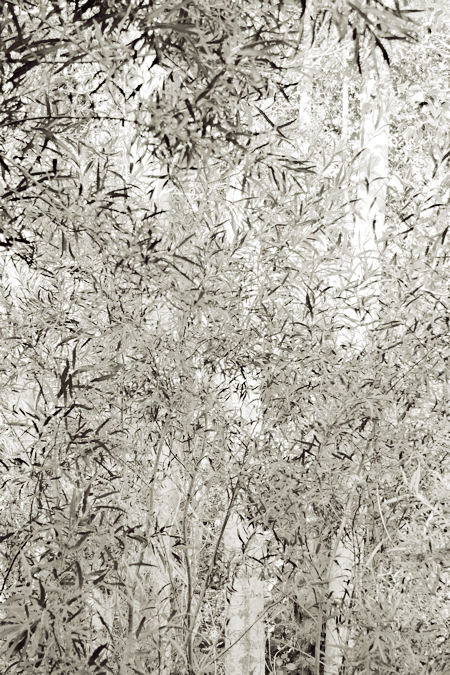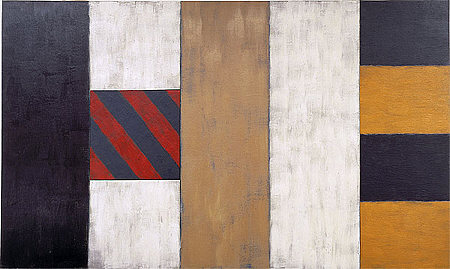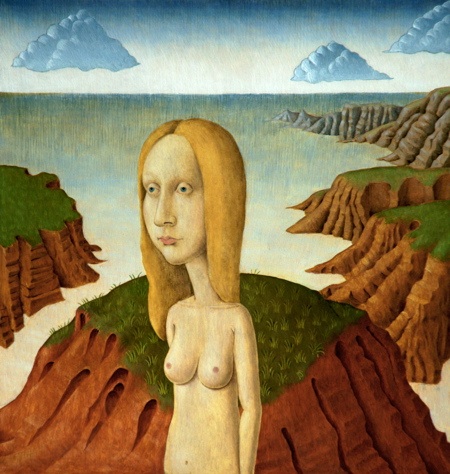
Archives for July, 2007
The paradox of non-distracting distractions
Mark Hobson: Art-making . . . I ‘think’ about nothing when I am in the moment of picturing. . . Don’t think about it now, just picture it ‘intuitively’.
Birgit posted this from Cezanne: “…if I think while painting, if I intervene, why then everything is gone.”
Hobson and Cezanne are both essentially saying: verbal thought, stay out of the art.
The surprise to me is that highly distracting stimuli — the guys working in the café kitchen next door, the book on tape, can disturb me and leave me un-distracted at the same time. My impression from my own experience and what I have read in the comments of the previous posts is that the non-verbal artist “within” for the most part doesn’t care what kind of distracting words are passing through the mind, as long as they don’t interfere with the art-making.
Cogito ergo sum
When we ask the question, “What do you think about when making art?” the real question is: “When we say ‘you’, to whom are we referring?” They guy/gal inside with all the words thinks he or she is in charge, but the real action goes on separately despite the jabbering.
A bit spooky, no? Because, if you think about it, all that art-making doesn’t just happen. There must be a huge amount of judgement, information processing — thought in essence — without words or access to words. The only way to appreciate consciously/verbally what is going on is, as Hobson says, to ‘listen’, listen to the feelings the work evokes. Not that that’s either easy (with all that distraction) or necessary. Better to stay out of it, Cezanne seems to say.
How to make use of that unnecessary verbal thought while working?
What do you think about when making art? Part II
What to think about when making art? Last week’s post brought some valuable insights. First, Jay helped to refine the question. “Depends upon where in the project you are,” he wrote. “If you’re making aesthetic and structural decisions, then you will concentrate on the task at hand.” Steve agreed that there are different stages of work, adding that he finds satisfaction “in consciously working out ‘problems'” in making art. more… »
imprinting through percepting

Continuing last Fridays’ musings on perception – wiring and plasticity of the visual system and moments of epiphany – I thought of my affinity (above) and my special moments prompted by coastlines. more… »
Deviations
How many times have you finished working on your art thinking that you have completed it and then come back to it later and completely change the piece? And, I don’t mean touching up or toning highlights or anything – just a complete restructuring (and sometimes destroying) of the original artwork. more… »
Disharmony

Bigland
I first stumbled upon Sean Scully in an Artnet article last year, but only a week ago did I go get some books of his work from the library. This post is about the notion of harmony and Scully’s approach to it, but I want to give a bit of context. Scully’s abstract paintings, drawings, and pastels are all based on a simplified vocabulary of stripes or short bars. This mature style developed by the early 80’s. Each painting has a different structure; the interest is partly in the composition, but more in the colors of each element — which I find lush and restrained at the same time — the and masterful way they are joined and coordinated.
A look back at a painting from ’99

This painting from 1999 is made with oil colors on a chalk ground on a wood panel. There are interesting aspects to this picture that make me want to take another look at it.
I like the mood that the colors and rhythms of the landscape give in contrast to the pale woman.
The rhythms of the grass and the receding landscape, the whites of the clouds, each sets up its own system. The woman in contrast has a simple rhythm of points — her nipples mirror her eyes. She is still and silent, but the landscape seems to reflect the texture of her thoughts and feelings — this is how I see it. The sharp edges and mellow forms are part of this texture.
All the oddness of the painting holds together because of its “internal coherence”, to borrow Arthur‘s expression.
I think that taking a careful look at older work is important because along the way I sometimes loose site of the things I did before, perhaps because I didn’t appreciate them earlier. Have you ever “rediscovered” an older work of your own, finding something in it you never saw before?